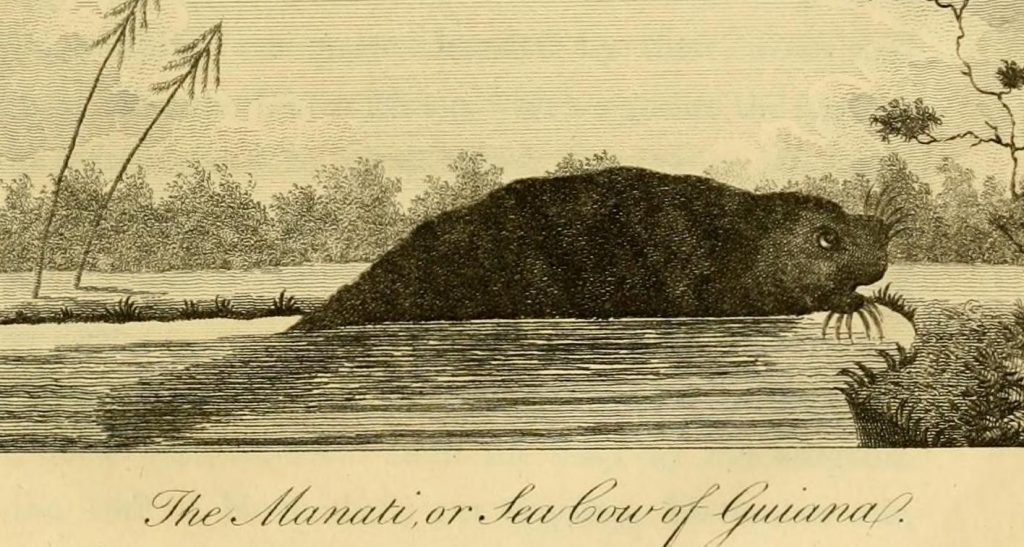Mermaid Monday: the Watra Mama January 15, 2018
Author: Beach Combing | in : Modern , trackbackApologies for the absence of Mermaid Monday over Christmas. Here we are back with an account from Captain Stedman: seen previously in this blog tangling with a fairy. Stedman has been talking about tapirs. He, then, gives some interesting opinions from his peers about mermaids (II, 182-3).
A Mr. Selefelder, of the Society service, at this time assured me, that he saw quite a different river-horse in the river Marawina; and Major Abercrombie, of the same service, declared, that a mermaid was lately seen in the river Surinam. Lord Monboddo also positively affirms the existence of sea-women and sea-men, while he asserts that they were seen so late as 1720. But, however respectable his lordship’s judgment and authority may be on other subjects, I can no more agree with him, as to men and women having fins and scales, than to their having tails.
He now moves on to a mysterious creature that he does not, unfortunately name.
The plain fact, in my humble opinion, is this, that in many rivers between the Tropics, both on the coast of Africa and South America, a fish sometimes appears half above the water, that bears a distant resemblance of the human species, but is smaller, nearly such as in 1794 was exhibited in London. The colour is of a blackish green; the head is round, with a deformed kind of a face; a strong fin runs from near the eyes to the middle of the back, which something resembles flowing hair: and the two supposed arms and hands, are two fleshy fins, or rather digitated swimmers; the female has breasts assuredly like a woman’s, being a viviparous animal; while the tail is exactly that of a fish, in most of which properties it agrees with the seal, but this last has no fin along the back, and is considerably larger, while it never appears erect above the water, like the former.
Probably we are dealing with the Manati that is included in a plate on the opposite page of Stedman’s book, with the tapir above it. We now move on to native opinions.
The above information I had from several old negroes and Indians, who all agreed perfectly in the description; some added, that they sang, which I apprehend to be no other than a grunting noise which they emit like most other tropical fish and amphibious animals. They concluded by assuring me, that though they were scarce, nothing was more dreaded by their wives and children, than the Watra Mama, which signifies the mother of the waters; and by which name, strange to tell, they distinguish their Sibyls.
Anything else on the Watra Mama? drbeachcombing AT gmail DOT com
29 Jan 2018, Bruce T writes: ‘West African Sea Goddess and consort of Damballa Wedo, the Great Serpent, and God of the Cosmos. You’ll often see Mami Wata depicted with a constrictor of some type wrapped around her, with it’s head and neck above and protecting her, that’s Damballah. Anywhere Yoruba and related peoples went to the in Americas they brought these deities with them. One of Mami Wata’s animal forms in Africa was said to be the manatee. When West Africans saw the Caribbean manatee they associated it with Mami Wata, I’m sure they did the same thing with Damballah when they laid eyes on the large constrictors that flourished in the American tropics. Voudoun, for example, has Mami Wata and Damballah at the head of the pantheon as do many West African influenced religions in the region.’



